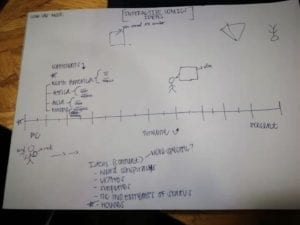I wanted to start off with a quote in the passage: “…the medium is the message because it is the medium that shapes and controls the scale and form of human association and action (152).” This quote is basically underlining McLuhan’s point of how it is the medium itself that should be valued, not the usage or the content, because of the simple fact that it is a fuel which starts or gives life to the fire of the internet, night light, phone companies, communication, even happiness.
There is also a misconception that mediums are the content, but it is the usage of those mediums that are the content of the medium. However, even with this idea of “content” in mind, this is usually perceived as something that you can see, touch, smell, etc. — a tangible item for instance. Basically, things that use the medium are usually mistakenly identified as the medium. Therefore, a lot of mediums get pushed under the rug and not fully recognized for the purpose it serves.
In my opinion, I believe that the acknowledgement of the medium, the source, of what the fuel is to the fire that I mentioned before, will allow us to progress forward with new technology, big advances, new research, more answers, etc. because instead of studying what is using the medium, we should instead look at the medium itself because that is what should truly be valued. Working from the core and the root of things will ultimately help us understand many unanswered questions.
